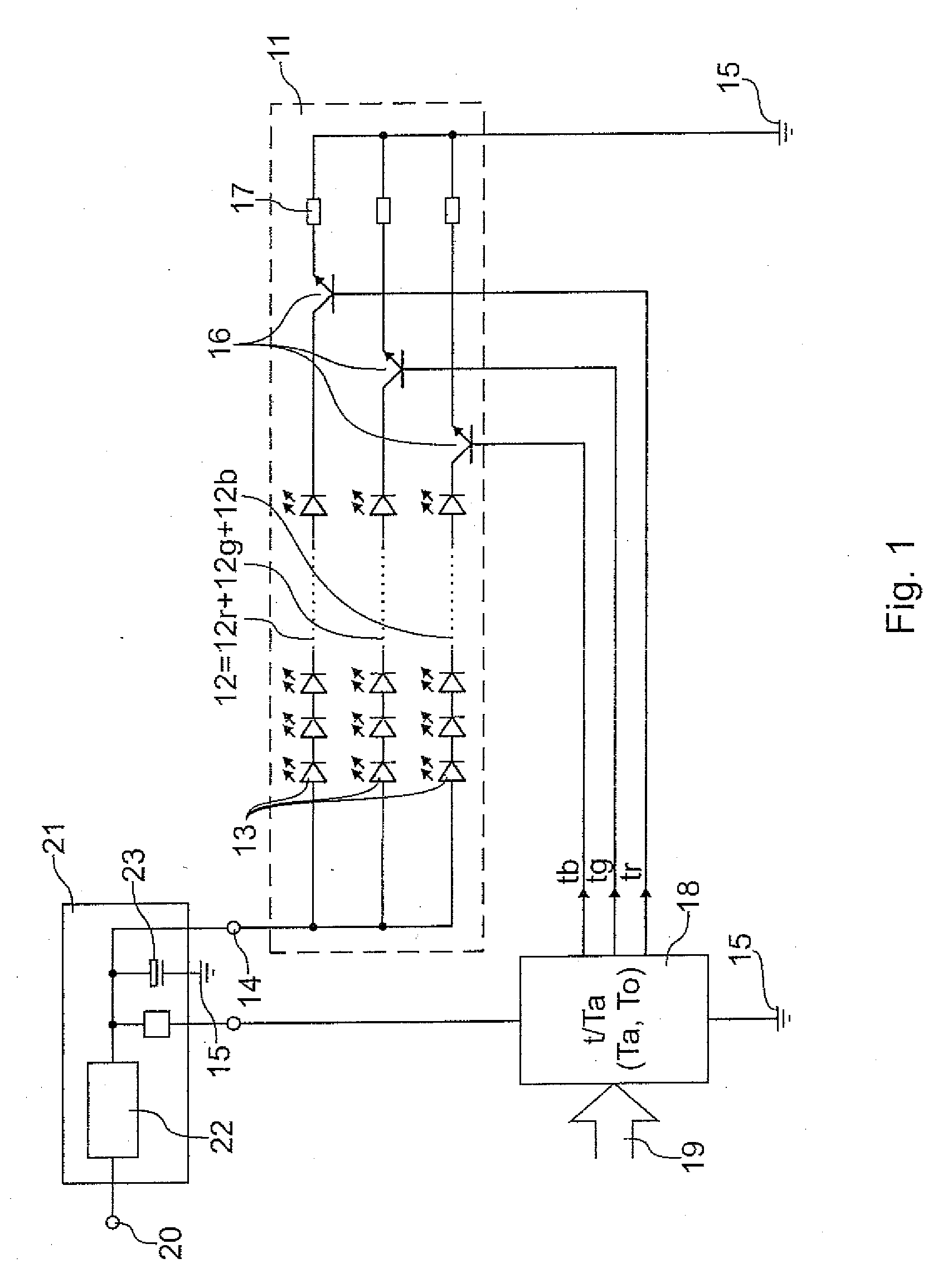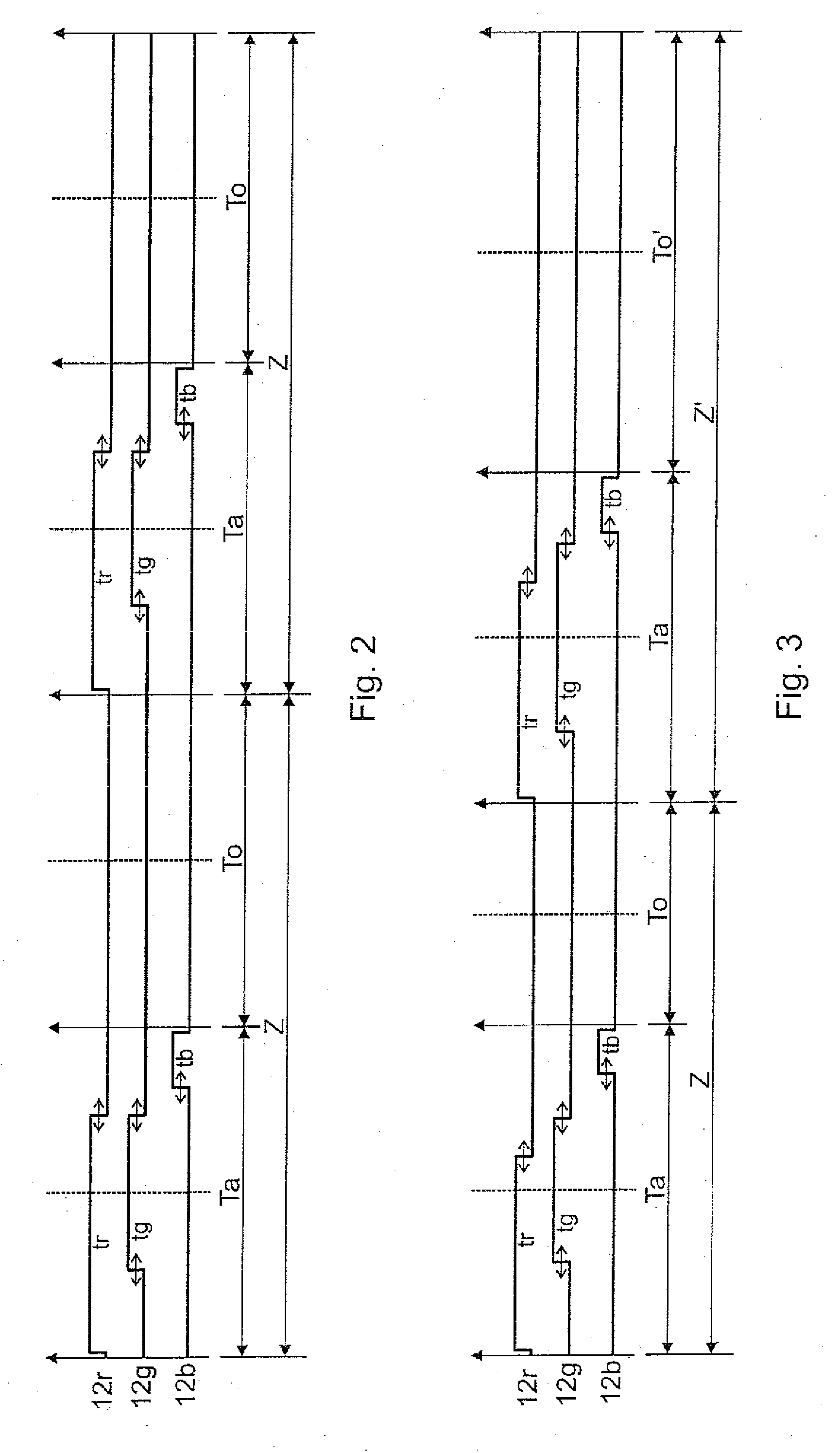Method for dimming the light emitted from LED lights, in particular in the passenger cabin of an airliner
a technology of led lights and passenger cabins, which is applied in the direction of electric variable regulation, process and machine control, instruments, etc., can solve the problems of inability to produce current sinks which switch sufficiently quickly using low-cost components, and difficulty in discharge of natural capacitances within leds, etc., to improve light resolution and color locus gamut, shorten current flow time intervals, and increase the effect of dimming ratio
- Summary
- Abstract
- Description
- Claims
- Application Information
AI Technical Summary
Benefits of technology
Problems solved by technology
Method used
Image
Examples
Embodiment Construction
[0022]The light 11 represented symbolically in FIG. 1 has in each case one array 12 (12r, 12g and 12b) whose brightness can be controlled individually formed by series circuits, of red, green and blue light-emitting diodes 13; this sketch ignores the fact that a white-light array, whose brightness is likewise controllable, and composed of LEDs which intrinsically emit blue but are coated with phosphorus is also expedient for fine color correction and in order to influence the color saturation. Each array 12 is connected between a supply voltage 14 (typically of 55 volts) and the appliance earth 15, in the direction of the latter via a constant-current sink 16 in the form of a bipole transistor, connected in the common-emitter form, with its emitter resistance 17.
[0023]A commercially available microprocessor 18 with a coding depth of typically 2 exp 4=16 bits time resolution within one working period Ta in each case switches on the transistors in the constant-current sinks 16 indepen...
PUM
 Login to View More
Login to View More Abstract
Description
Claims
Application Information
 Login to View More
Login to View More - R&D
- Intellectual Property
- Life Sciences
- Materials
- Tech Scout
- Unparalleled Data Quality
- Higher Quality Content
- 60% Fewer Hallucinations
Browse by: Latest US Patents, China's latest patents, Technical Efficacy Thesaurus, Application Domain, Technology Topic, Popular Technical Reports.
© 2025 PatSnap. All rights reserved.Legal|Privacy policy|Modern Slavery Act Transparency Statement|Sitemap|About US| Contact US: help@patsnap.com



